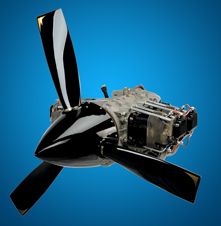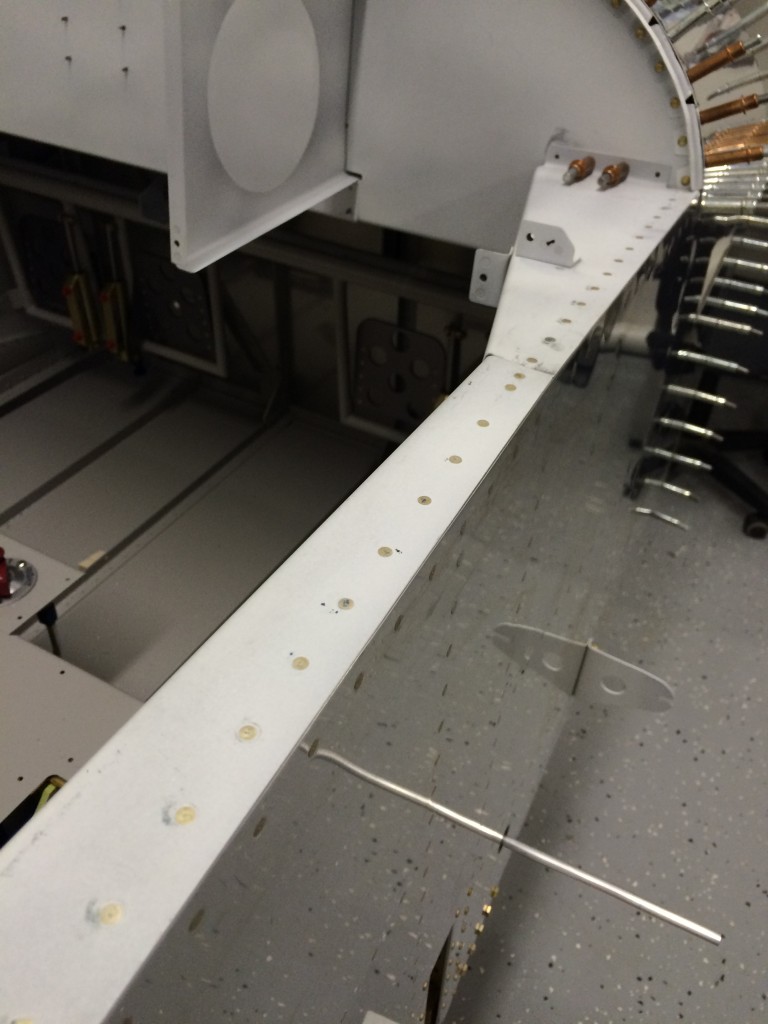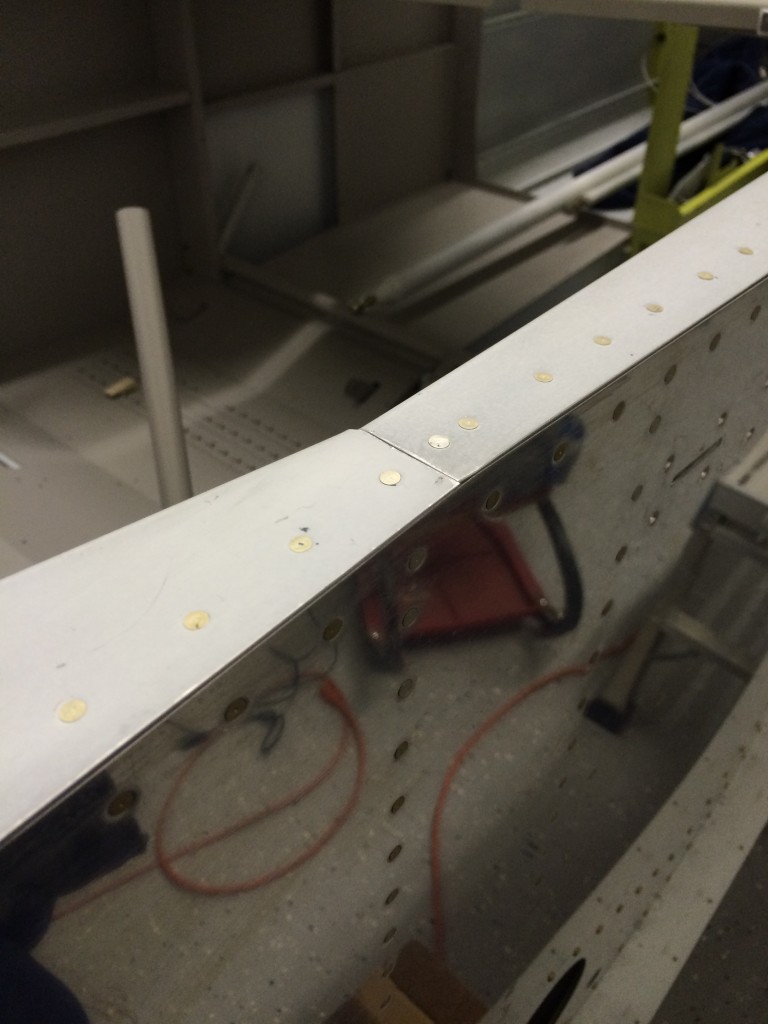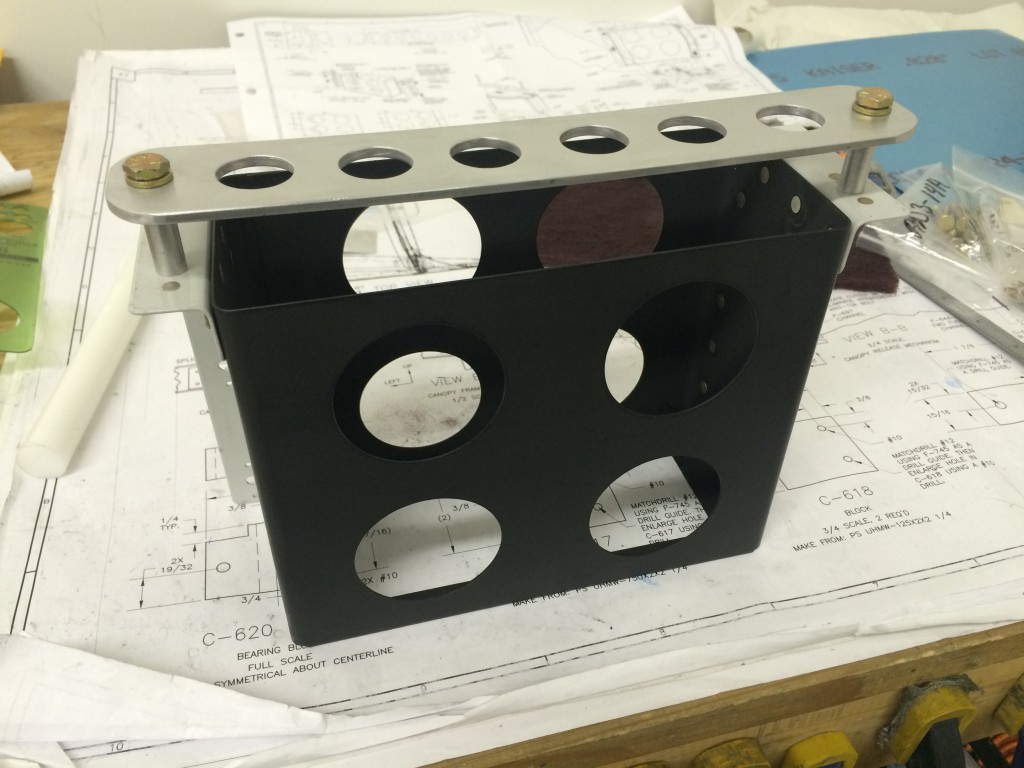More pictures of work in progress…I’m test-fitting the brake lines fabricated by Tom Swearingen at TS Flightines.

More pictures of work in progress…I’m test-fitting the brake lines fabricated by Tom Swearingen at TS Flightines.
It’s looking likely that I’ll be ready for an engine sometime this summer and over the last year I’ve been working through the various engine options for our RV. Many years ago I decided that the engine would be some variant of the 180 horsepower Lycoming IO-360-M1B with a horizontal sump and set up for a constant-speed propeller. I’ve already purchased a finishing kit from Van’s that includes a cowl for this configuration.
When I first started building the RV, I planned to buy a certified Lycoming engine from Van’s because of the excellent prices they offer to RV builders. But since Van’s now only carries experimental versions of Lycoming engines, and there’s competition in the experimental market to keep prices down, we decided to expand our search and look at ECI Titan and Superior XP-360 experimental engines from other vendors.
An advantage to buying an experimental engine from one of these vendors is that they do some value-added work like flow-matching cylinders and balancing rotating components. I really want a smooth-running engine, and these tweaks apparently help. Had we been buying an engine a few years ago, we might well have worked with Mattituck Services on Long Island. They had an excellent reputation for customer service and sold experimental engines to many local RV builders. But they no longer exist as a custom engine builder, so that option was out. I had also been investigating engines from Aero Sport Power in Kamloops, British Columbia. Many west-coast RV builders, including my good friend Jim Piavis, bought engines from Aero Sport and have been very happy with them because of their great after-the-sale support. I defintely want that kind of support from my engine provider.
One of the factors in my selection process was the choice of fuel injection systems. I’d pretty much settled on a Precision Silverhawk EX system because it’s the experimental version of, and identical to, the proven Bendix RSA system that I’ve flown on Piper Arrows. Until recently, experimental Lycoming engines sold through Van’s came with the Precision system but as of 2014 Lycoming switched to Avstar fuel injection systems – essentially a knockoff of the Precision system. I’ve had several interactions with Alan Jesmer and the folks at Precision, and decided that I wanted my engine to have their FI system. Since Van’s wasn’t willing to customize the Lycoming engines they sell, this wound up being a vote against buying an engine from them.
I had almost decided to buy my engine from Aero Sport this spring, but decided to ask my A&P/IA friends around Boston about local engine providers. They all pointed me to Tim Hess at Unlimited Aero Engines at the Fitchburg, MA airport (KFIT). Tim was formerly the Crew Chief on Mike Goulian‘s Red Bull air race team, he’s built highly customized, high performance engines for Mike and Kirby Chambliss. In addition to continued support to the Red Bull Air Race organization, Tim runs his engine shop at FIT and has done overhauls and repairs for many of my A&P friends. In short, he’s a world-class aircraft engine expert.
At the suggestion of my good friend Captain John, I visited Tim’s shop a couple of weeks ago and asked him for a quote on an experimental IO-360-M1B engine. He came back with a very competitive price on an custom-built Superior XP-360 with a cold-air sump and horizontal induction, roller lifters, Precision fuel injection, one PMag and one Slick mag, with flow matching, balancing, test stand run and documentation. Tim seemed really interested in building an engine for my project.
I really like the idea of working with a local shop on my engine, and it’s not every day you get a chance to work with someone like Tim who just happens to be in my aviation back yard. Plus, there’s the added benefit of having no sales tax in Massachusetts on aircraft parts. So, two days ago I wrote Tim a check for one of these…

…and sometime later this year our RV will finally have an engine. I’m looking forward to working with Tim, and I’ll be updating the website as we continue toward delivery of the engine.
Today was a great day, for many reasons. First, I was invited on a dawn patrol breakfast flight with Bob DiMeo, my EAA Technical Counselor, and a group of pilots from eastern/central Massachusetts and New Hampshire. The Dawn Patrol was heading to Keene, NH (KEEN) to a little diner right outside the airport. Bob has a beautiful RV-8 painted in Tuskeegee Airmen colors.
We departed Nashua with a Bonanza. You’ll see it in the panorama below, just above and in front of the right wingtip…
Mount Monadnock was in the way…
…but fortunately the RV-8 is pretty maneuverable.
The weather at KEEN was good but deteriorating…there were snow showers moving in from the southwest. The ceiling had come down a bit by the time we left, but we had no problems getting some. All in all, a great flight and I got to log some back-seat stick time in Bob’s RV-8.
Once back at Nashua, we started on more RV fun. Once again I wedged my not-petite frame into the tailcone to back-rivet the ELT antenna doubler…
…while Bob managed the back-rivet set on the outside. Then we moved onto riveting two heavy angles to the rear cockpit bulkhead. I didn’t get any pictures of those parts, so you’ll just have to imagine us working on them.
We then clecoed the canopy side rails in place and riveted them to the fuselage longerons. Here’s Bob expertly clecoing the rails…
These rivets weren’t particularly hard to set, but there were a few that took a little extra time and the use of a very narrow bucking bar.
 But in the end, the side rails look good on the fuselage.
But in the end, the side rails look good on the fuselage.
 The seam between the forward and center rails came out well, which means that all the work I did bending the longerons really paid off.
The seam between the forward and center rails came out well, which means that all the work I did bending the longerons really paid off.
So…between flying, breakfast and good progress on the fuselage, it was a great RV day!
I’ve been debating for a long time how to deal with these very heavy angles that support the cockpit’s real roll bar. They’re supposed to be riveted in place after the fuselage skins are completely riveted in place, but access to the them is limited once the canopy rails are riveted. And unfortunately, the canopy rails need to be riveted to fit the canopy.
So I’ve elected to do what a lot of other builders have done, and relieve the outside edges of these angles to accommodate blind rivets in the side skin holes that are blocked by the angles.
 A little work with files, sandpaper and scotchbrite did the trick.
A little work with files, sandpaper and scotchbrite did the trick.
I’ve been getting frustrated with the canopy and have also been waiting for some blind rivets and other hardware I need for finishing up the fuse. So, I decided to build the battery box as a small diversion. A quick day’s work except for painting…
 In all likelihood I’ll mount it according to Vans’ firewall forward mounting plans but until I’m ready to do firewall stuff, the battery box will be waiting on the shelf.
In all likelihood I’ll mount it according to Vans’ firewall forward mounting plans but until I’m ready to do firewall stuff, the battery box will be waiting on the shelf.
Today we started the last major structural part of the airplane – the canopy. The canopy is constructed from the forward edge back, and the first step is to fit the forward canopy skin to the welded aluminum canopy frame.
The frame has some holes already match-drilled in its forward ribs so it’s not tough to get the skin on the front of the frame, but the aft part of the frame is drilled in assembly with prepunched holes in the skin. The aft frame tube didn’t line up particularly well with the skin, so I had to apply some manual persuasion (i.e., I used a dead-blow hangar) to make the tube align with the skin for match-drilling.
I drilled the holes to #40, although they’ll be drilled later on to #30 and countersunk to accommodate blind flush rivets.
The skin still doesn’t fit particularly well…there are some gaps between the frame and skin that just can’t be closed. From reading various online forums and other builders’ websites, this is a common problem and I’ll find a way to deal with it.
 Also, the canopy frame sides don’t line up well with the fuselage. Some additional manual persuasion may be required here…
Also, the canopy frame sides don’t line up well with the fuselage. Some additional manual persuasion may be required here…